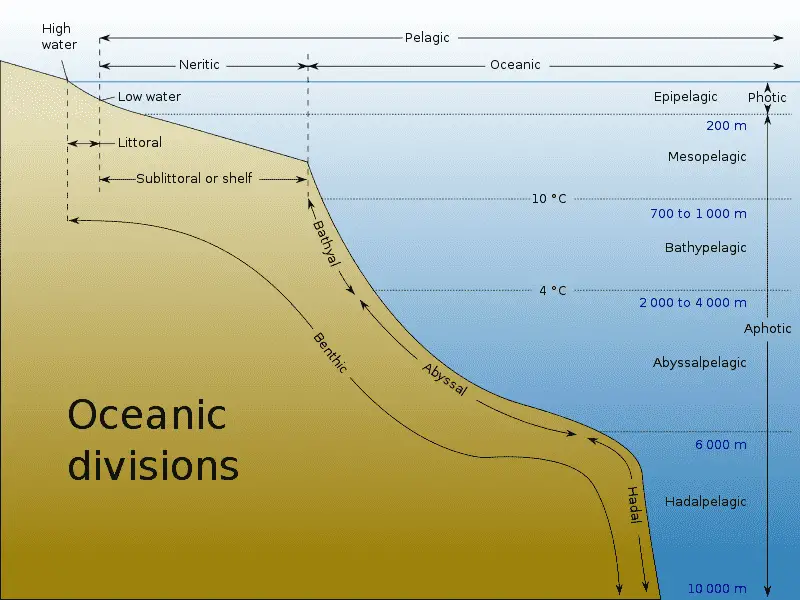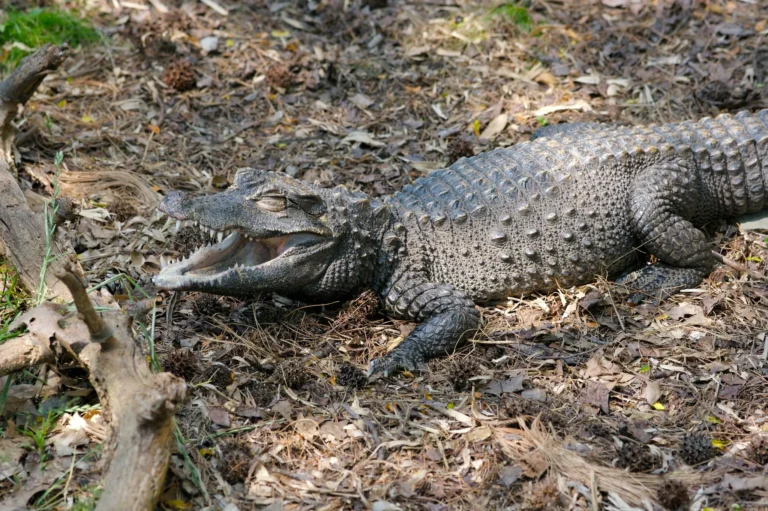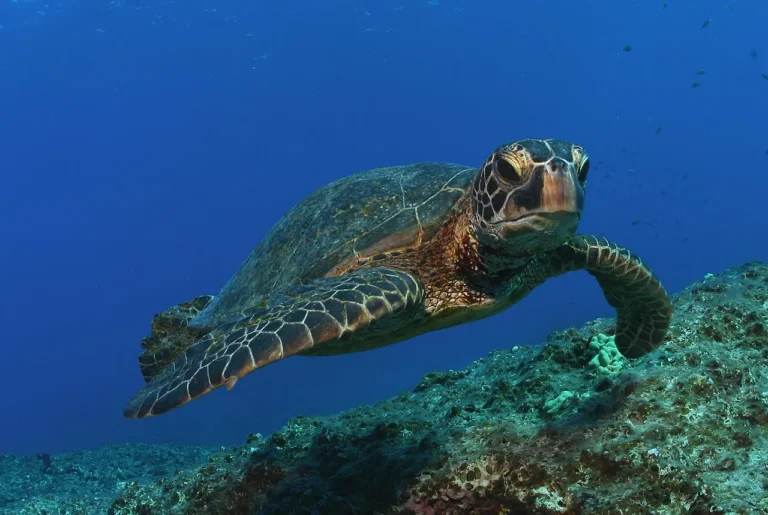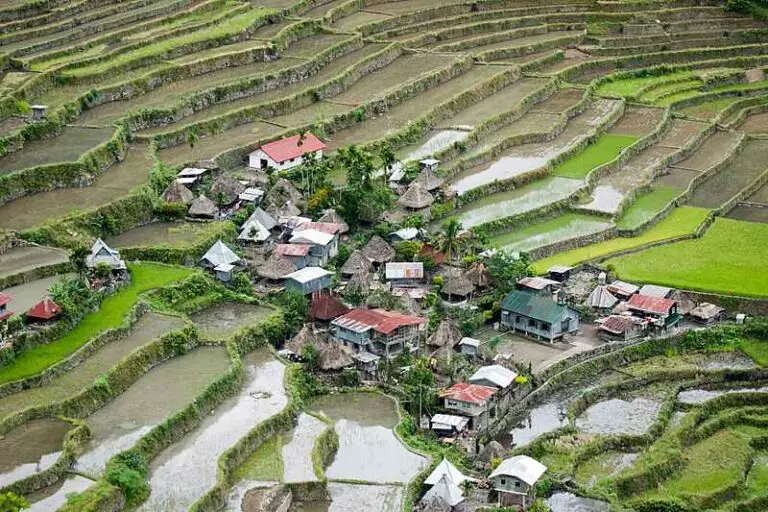Marine Ecosystems Definition, Characteristics, Importance Explained
Marine ecosystems are saltwater bodies defined by distinctive physicochemical properties, biological organisms and processes. This article discusses marine ecosystems definition, characteristics, and importance, as outlined below;
-Marine Ecosystems Definition: 5 Ways to Define Marine Ecosystems
-Characteristics of Marine Ecosystem
-Biotic and Abiotic Factors in Marine Ecosystems
-Importance of Marine Ecosystems
Marine Ecosystems Definition: 5 Ways to Define Marine Ecosystems
Marine ecosystems refer to a category of aquatic ecosystems that are characterized by high levels of dissolved salt [2], as well as significant physical, chemical and biological diversity.
The above is a very basic marine ecosystems definition, that portrays such ecosystems the basis of their characteristics; most essential of which is the presence of saline water.
Based on characteristics, we can identify and distinguish multiple types of marine ecosystems. Some of them are mentioned in the alternative marine ecosystems definition that is given below;
Marine ecosystems are saline water-based environmental systems that can be distinguished into different types including; marine coastal, marine surface, and saltwater wetland ecosystems, respectively.
While the various types provide insight into the factors that define marine ecosystems, a closer view of these ecosystems can be gained by highlighting some relatable examples. Below is an alternative marine ecosystems definition that mentions some examples of marine ecosystems;
Marine ecosystems are a group of aquatic ecosystems with significant water-salinity, represented by multiple examples like; oceans, estuaries, mangrove forests, salt marshes, sandy beaches, coral reefs, and saltwater lakes.
As is the case for all ecosystems, marine trophic levels as included in ocean energy pyramids, biomass pyramids, food chains and food webs, are used to categorize marine plants and animals based on feeding relationships. These same relationships lead to the transfer of bioenergy in the ecosystem.
Below are two different marine ecosystems definitions; which mention some marine plants and animals respectively;
Marine ecosystems are saltwater-aquatic ecosystems with highly adapted organic species including plants like; Chlorophyta (green algae), Rhodophyta (red algae), Sargassum (macro-algal seaweed) seagrass, and kelp [3].
A marine ecosystem or habitat is a saline water terrain that is inhabited by various organisms including fish like shark; fissipeds like sea otter and polar bear; cetaceans like dolphin, porpoise and whale; sirenians like manatee; and pinnipeds like walrus and sea lion.

Characteristics of Marine Ecosystem
Characteristics of marine ecosystem are;
1. Significant salinity level
2. Biotic components include diverse plants, monerans and animals
3. Abiotic components include multiple physicochemical factors
4. Variation of solar penetration with depth (which can be used to subdivide the ecosystem into photic and aphotic zones [4])
5. Can act as a carbon sink, and a system for geochemical cycling and recycling
6. Distinctive internal topographic features like trenches, ridges, and mounts [1]
Vertical zonation is very useful in the study and characterization of marine ecosystems, with various systems of subdivision existing.
Marine ecosystem zones are; littoral, neritic, bathyal and abyssal; which are differentiated by their depth-ranges. Other marine zones may also be identified based on water-flow conditions, and dominant organisms. These include intertidal, pelagic and benthic zones.
Characteristics tend to vary from one marine ecosystem zone to another, and these variations in turn determine the organisms that are able to survive in these zones.

Biotic and Abiotic Factors in Marine Ecosystems
Biotic and abiotic factors govern the nature and conditions of marine ecosystems.
Some important biotic factors in marine ecosystems are;
1. Dominant organic groups (phytoplankton, monerans, fish, amphibians, mammals, reptiles)
2. Reproduction
3. Adaptive characteristics
5. Population size
6. Species number
7. Biodiversity
8. Bioenergy cycling in food chain and energy pyramid
9. Organic matter and the (inverted) biomass pyramid
The above-listed can serve as measurement-parameters in the evaluation of marine ecosystem organisms, their biological activities, and the implications of these activities.
An abiotic factor in marine biology is any non-living, inorganic component of an environment or ecosystem, that has direct or indirect influence on the conditions of the system.
Abiotic factors in marine ecosystems are;
1. Temperature
2. pH
3. Salinity
4. Acidity
5. Turbidity
6. Alkalinity
7. Nutrient availability
8. Dissolved Oxygen (DO)
9. Biochemical Oxygen Demand (BOD)
10. Chemical Oxygen Demand (COD)
11. Solar radiation
12. Water flow-trend
13. Concentration of elements like Cl
By determining the physical and chemical conditions of marine ecosystems, these abiotic factors also influence the biological organisms and processes of the ecosystem.
Importance of Marine Ecosystems
In summary, the importance of marine ecosystems can be traced to their role as part of the Earth's natural systems alongside freshwater and terrestrial ecosystems like rivers, streams, forests, tundras, grasslands and deserts. Potential benefits of marine ecosystems can also be viewed as a basis of importance.
Each of these two bases (role and benefits) are addressed separately.
Reasons why marine ecosystems are important include their role in;
1. Containment (and support) of biodiversity
2. Climate regulation
4. Nutrient cycling
5. Oxygen production
Benefits of marine ecosystems are;
1. Job creation
2. Transportation
3. Renewable energy production (hydro, wave, tidal, ocean thermal)
4. Sea food supply
5. Raw material supply (such as sodium chloride and carbonate)
6. Hazard mitigation role (such as flood and stormwater-pollution control using dams)
7. Source of minerals and energy resources like offshore petroleum/natural gas
8. Avenue for research and development through ocean exploration
Conclusion
Marine ecosystem is a type of aquatic ecosystem comprising of saline water and adaptive organisms.
Characteristics of marine ecosystem are; significant salinity; diverse plants, monerans, animals; distinctive physicochemical factors, variable solar penetration, role as carbon sink, and distinctive underwater topography.
Biotic factors in marine ecosystems are; dominant organisms, reproduction, adaptive features, species richness, population size, species number, biodiversity, bioenergy cycling, and biomass.
Abiotic factors in marine ecosystems are; temperature, pH, salinity, acidity, turbidity, alkalinity, nutrient availability, dissolved oxygen (DO), biochemical oxygen demand (BOD), chemical oxygen demand (COD), solar radiation, water flow trend, and element concentrations.
The importance of marine ecosystems can be traced to; climate regulation, biodiversity-containment, carbon sequestration, nutrient cycling, and oxygen production.
Benefits of marine ecosystems are; job creation, transportation, renewable energy production, food supply, raw material supply, hazard mitigation, source of minerals and energy resources, and role as an avenue for research and development.
Reference
1). Balasubramanian, A. (2011). "Topography of Ocean Floor." Available at: https://doi.org/10.13140/RG.2.2.20471.83362. (Accessed 15 April 2023).
2). Dolbeth, M.; Arenas, F. (2021). "Marine Ecosystems: Types, Their Importance and Main Impacts." In: Leal Filho, W., Azul, A.M., Brandli, L., Lange Salvia, A., Wall, T. (eds) Life Below Water. Encyclopedia of the UN Sustainable Development Goals. Springer, Cham. Available at: https://doi.org/10.1007/978-3-319-71064-8_38-1. (Accessed 14 April 2023).
3). Hamaguchi, M.; Miyajima, T.; Shimabukuro, H.; Hori, M. (2022). "Development of Quantitative Real-Time PCR for Detecting Environmental DNA Derived from Marine Macrophytes and Its Application to a Field Survey in Hiroshima Bay, Japan." Water 2022, 14, 827. Available at: https://doi.org/10.3390/w14050827. (Accessed 15 April 2023).
4). Zheng, Y.; Wang, J.; Zhou, S.; Zhang, Y.; Liu, J.; Xue, C. X.; Williams, B. T.; Zhao, X.; Zhao, L.; Zhu, X. Y.; Sun, C.; Zhang, H. H.; Xiao, T.; Yang, G. P.; Todd, J. D.; Zhang, X. H. (2020). "Bacteria are important dimethylsulfoniopropionate producers in marine aphotic and high-pressure environments." Nat Commun. 2020 Sep 16;11(1):4658. Available at: https://doi.org/10.1038/s41467-020-18434-4. (Accessed 15 April 2023).




